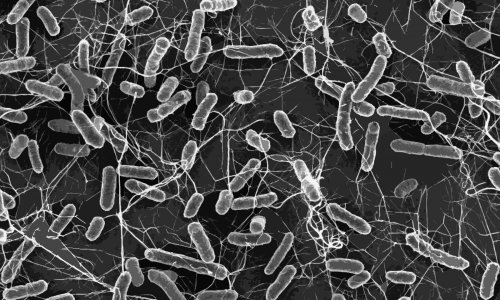Article • Hygiene guidelines
Hand washing: in hot or cold water?
‘The literature on hand washing, while extensive, often contains conflicting data, and key variables are only superficially studied, or not studied at all. Some hand washing recommendations are made without scientific support, and agreement between recommendations is limited,’ explained Professor Donald W Schaffner at Rutgers University, New Jersey, USA, who has led a team of researchers to clarify this underdetermined situation. Specifically, they set out to investigate the influence of key variables, such as soap volume, lather time, water temperature and product formulation on hand washing efficacy.
Report: Brenda Marsh
One of their most interesting findings concerns water temperature, a subject on which the USA”s Food and Drug Administration (FDA) stipulates that warm water, rather than cold water, is more effective to remove germs during handwashing. The FDA advises caterers, for example, to adhere to a water temperature of 40° C, plus or minus 2 degrees (100-108°F). The idea is that hot water lathers up soap and therefore ensures spread throughout hands. However, The USA’s Centre for Disease Control and Prevention (CDC Guideline for Hand Hygiene in Healthcare Settings) recommends:
- When cleaning your hands with soap and water, wet your hands first with water, apply the amount of product recommended by the manufacturer to your hands, and rub your hands together vigorously for at least 15 seconds, covering all surfaces of the hands and fingers.
- Rinse your hands with water and use disposable towels to dry. Use towel to turn off the faucet.
- Avoid using hot water, to prevent drying of skin.
- Other entities have recommended that cleaning your hands with soap and water should take around 20 seconds.
- Either time is acceptable. The focus should be on cleaning your hands at the right times.
In England, from 1998-2000, a nurse-led multi-professional and specialist clinicians research team, commissioned by the Department of Health, produced the national evidence-based guidelines for preventing healthcare-associated infections (HCAI) in National Health Service (NHS). The guideline: Effective handwashing technique involves three stages – preparation, washing and rinsing, and drying.
- Preparation: wet hands under tepid running water before applying the recommended amount of liquid soap or an antimicrobial preparation.
- Washing: the hand wash solution must come into contact with all of the surfaces of the hand. The hands should be rubbed together vigorously for a minimum of 10-15 seconds, paying particular attention to the tips of the fingers, the thumbs and the areas between the fingers. Hands should be rinsed thoroughly.
- Drying: use good-quality paper towels to dry the hands thoroughly.
The same rationale is not dominant in many, or most, European countries – though belief and practice can be personal. In the new Rutgers University research (pub: Journal of Food Protection. May 2017): ‘Quantifying the Effects of Water Temperature, Soap Volume, Lather Time, and Antimicrobial Soap as Variables in the Removal of Escherichia coli ATCC 11229 from Hands’, bland non-antimicrobial soap was lathered up for 5 seconds using 38°C (100°F) water temperature.
The microorganism used was Escherichia coli, as cited in the research title. 10 men and 10 women took part in the research over a six-month period, to measure the effects of hot and cold water and the elements also listed in the title. The devised test was replicated 20 times, when the volunteers washed their hands in water that was 16°C, 26°C, or 38°C. Different amounts of soap were used: 0.5 millilitres, one millilitre, or two millilitres. Antimicrobial soap (1% chloroxylenol) did not prove particularly more effective than regular soap in removing the E. coli within the various tests. In one aspect, however, lathering time notably improved efficacy. Water temperature had no significant effect on bacteria reduction. Whether 38°C or 16°C, the team detected no difference in bacteria reduction.
The study also showed that washing hands for as little as 10 seconds proved effective against germs. ‘People need to feel comfortable when they are washing their hands, but as far as effectiveness, this study shows us that the temperature of the water used didn’t matter,’ Schaffner concludes. ‘There should be a [US] policy change. Instead of having a temperature requirement, the policy should only say that comfortable, or warm, water needs to be delivered. We are wasting energy to heat water to a level that is not necessary,’ he added, suggesting that the policy should advise the use of ‘comfortable, or warm water’. The researchers recommend more studies to determine how much soap and what type is most effective to remove pathogens.
19.06.2017










